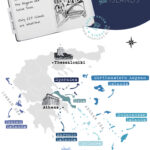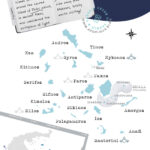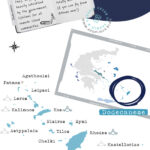A GREEK’S GUIDE TO GREECE
last updated: May 2023

Ever since I moved to London from Greece (about 10 years ago) and while chatting to people about travelling to Greece (my favourite topic), I, more often than not, come across blank faces when I mention Greek islands other than Mykonos and Santorini. Even people who have gone the extra mile and visited smaller, lesser-known islands have trouble remembering their itineraries. ‘Don’t ask me how we got there, we got on a boat that somebody told us to -we were lucky!’ This is understandable, but you don’t need to base your trip to the Greek islands on luck (unless you want to)! I compiled A Greek’s Guide to Greece to acquaint people with my country and help you make the most of your trips.
In this post, I will show you how to get to and around the Greek islands, focusing on the Cyclades and Dodecanese; they are the source of confusion for most travellers. We will discuss the pros and cons about the various possible combinations of flights and / or ferry routes and find the quickest and easiest ways to reach each island (from Athens or abroad). Getting to islands that have international airports is easy enough, but, I will demystify how to reach those islands that do not -the majority!
The aim is for you to have the knowledge, information and confidence to create your perfect Greek island itinerary… effortlessly.
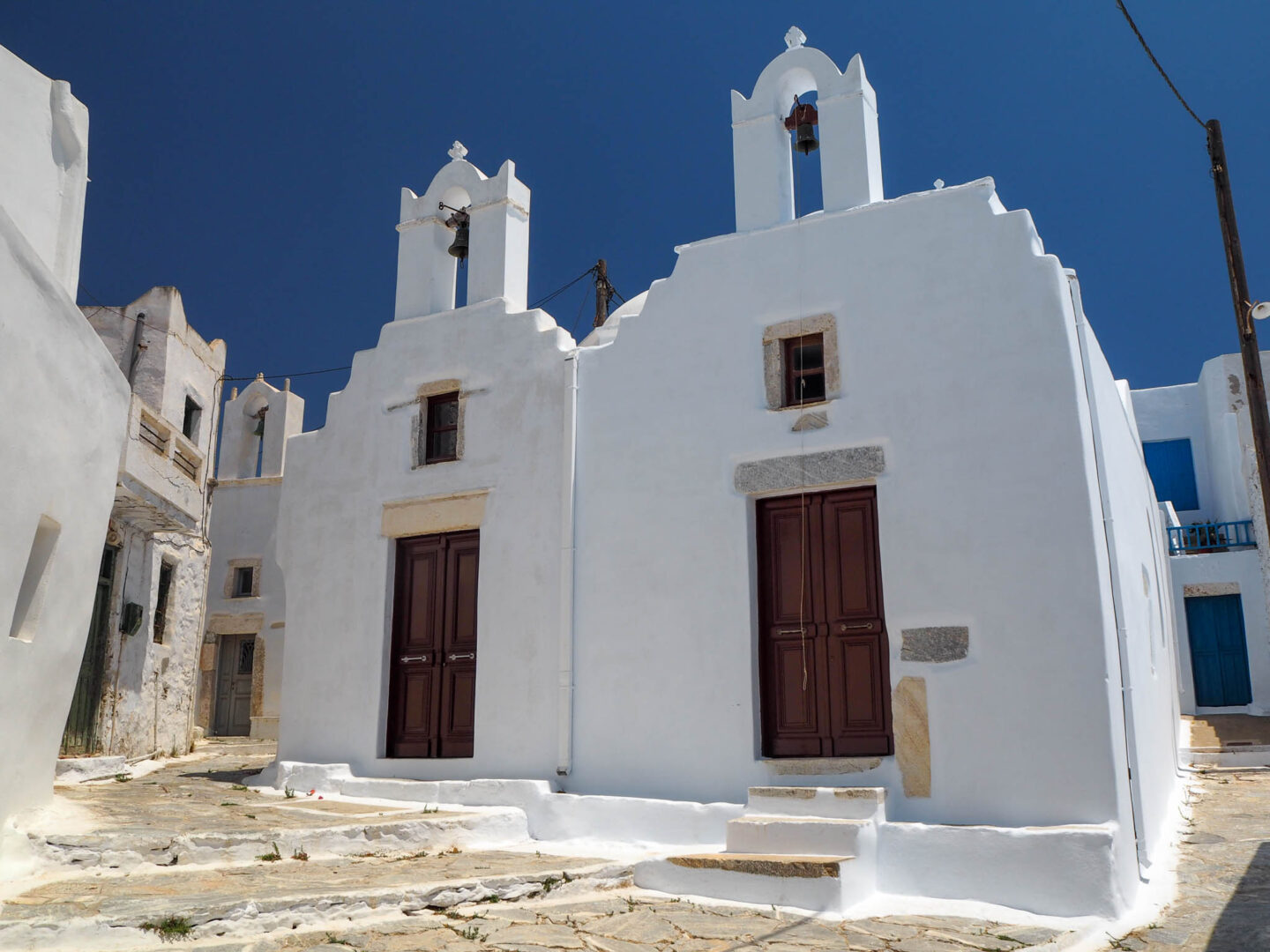
GREEK ISLANDS IN A NUTSHELL
A SHORT GEOGRAPHY LESSON
To begin with, a geography crash course. Greece has a total of 6,000 (!) islands and islets scattered in the Aegean and Ionian Seas, of which only 227 are inhabited.
The islands in Greece are geographically and administratively organised into eight groups. Each island group exhibits distinct architecture and landscape:
- Ionian islands (in the Ionian Sea), and
- 7No groups in the Aegean Sea:
1. Northeastern Aegean islands
2. Sporades
3. Evia*
4. Saronic (or Argosaronic) islands
5. Cyclades
6. Dodecanese
7. Crete
*Evia is, technically, an island. Nevertheless, Greeks do not really consider it as one due to its proximity and connectivity (with bridges) to the mainland and its predominantly urban character.
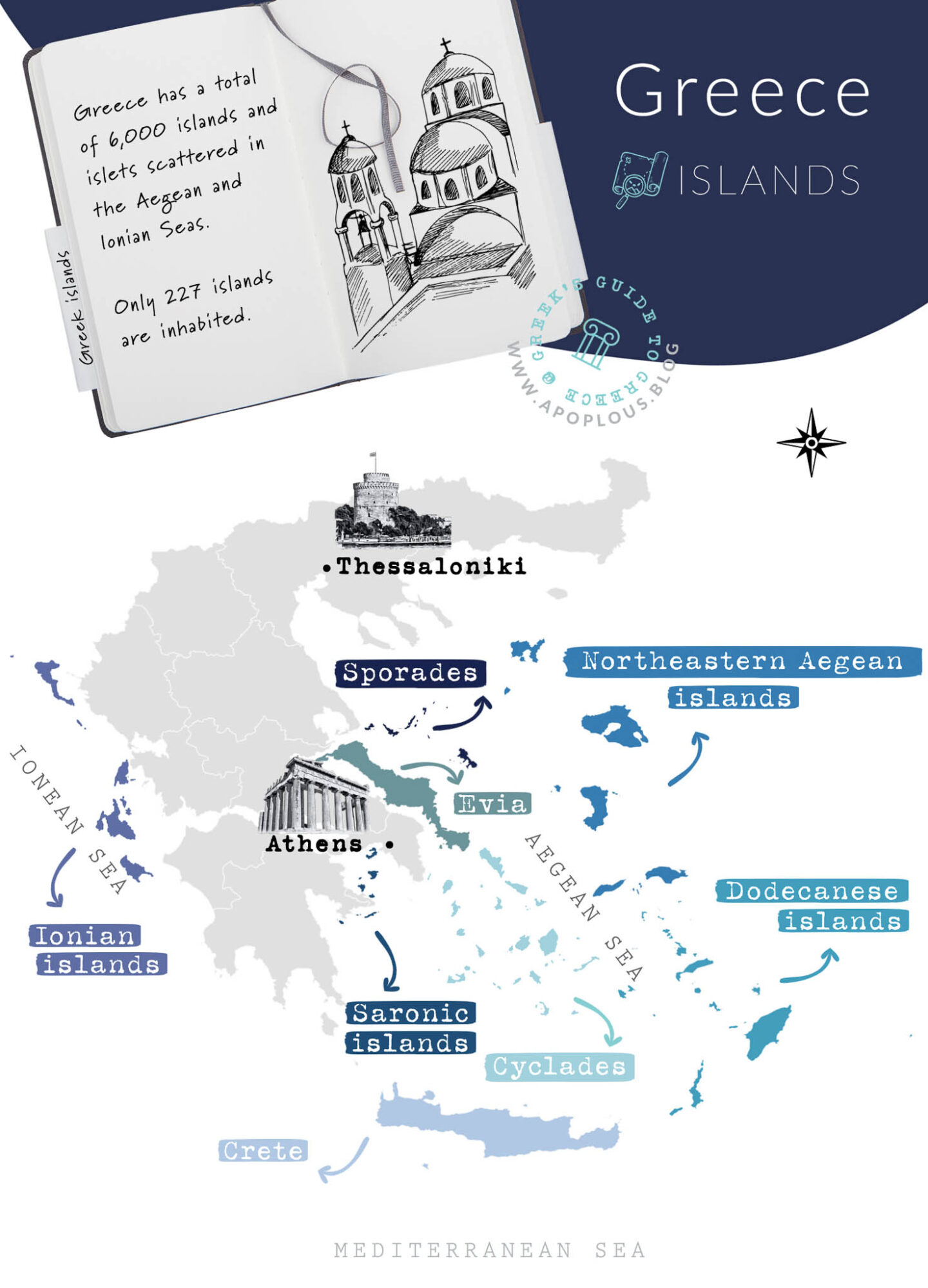
As I mentioned previously, this blog post will specifically address travelling to and around the Cyclades and Dodecanese. I have it on good authority that they are the source of confusion for most travellers.
CYCLADES
Dusty paths in the sun burnt landscape, demure white houses with windswept colourful shutters, the deep nautical blue of the Aegean and a history that spans millennia… The beauty of Greece is echoed in the purest and most vivid of ways in the Cycladic archipelago.
The 56 islands and islets comprising the Cyclades are probably the most famous of the Greek islands and, for good reason.
You probably already know international superstars Mykonos and Santorini, and… yes, they are totally worthy of their celebrity status.
Nevertheless, you will get a more authentic experience and stunning Cycladic scenery in Kea, Kythnos, Serifos, Sifnos, Milos, Kimolos, Andros, Tinos, Syros, Paros, Antiparos, Naxos, Ios, Folegandros, Sikinos, Amorgos (to name the main ones).
But wait, there is more! The tiny islands of Koufonisia, Schinousa, Irakleia and Donousa comprise the ‘Small (or Minor) Cyclades’. They are the epitome of island life and charm.
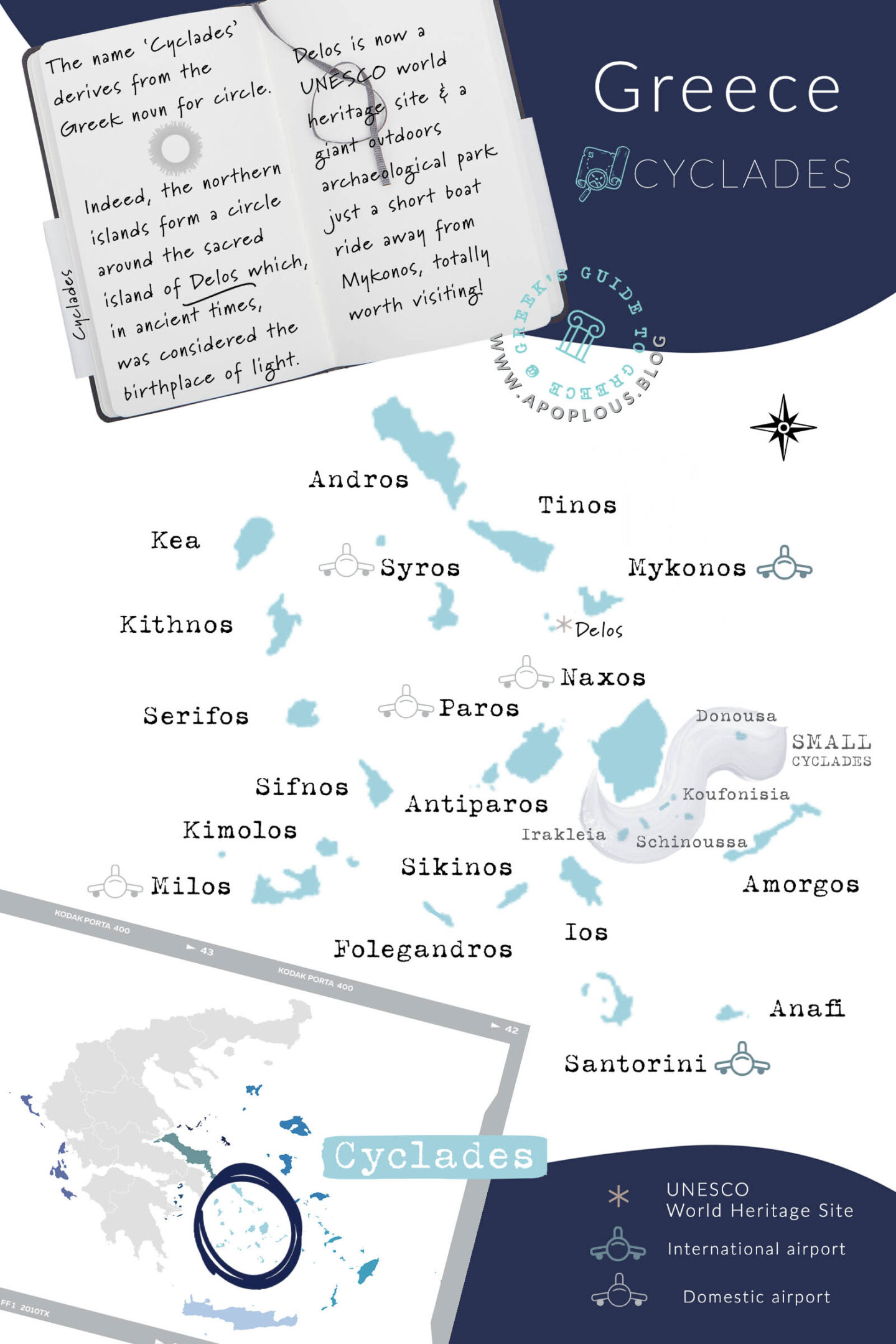
DODECANESE
The islands of the Dodecanese archipelago reflect the rich and delightful diversity of the natural and built environment of Greece. They are also testaments to fascinating aspects of more recent Greek history.
Dodecanese means twelve islands in Greek. Nevertheless, the main islands in the Dodecanese archipelago are, in fact, 15. In addition to those, there are also another 90+ islets comprising this island group in the southeastern Aegean Sea.
Apart from popular Rhodes and Kos, Patmos, Astypalaia, Kalymnos, Karpathos, Leros, Nisyros, Symi, Chalki, Kasos & Kastellorizo, Agathonisi, Leipsoi and Tilos are the main Dodecanese islands.
While one could argue that the Cycladic islands mostly look alike, the Dodecanese islands don’t. From the medieval castles in Rhodes, Nisiros’ volcanic landscapes, Karpathos’ mountainous stone villages to the Cycladic-like sceneries in Patmos and Astypalaia and colourful neoclassical mansions in Symi and Chalki, each one of the 15 main islands has a distinct scenery and character offering unique travel experiences.
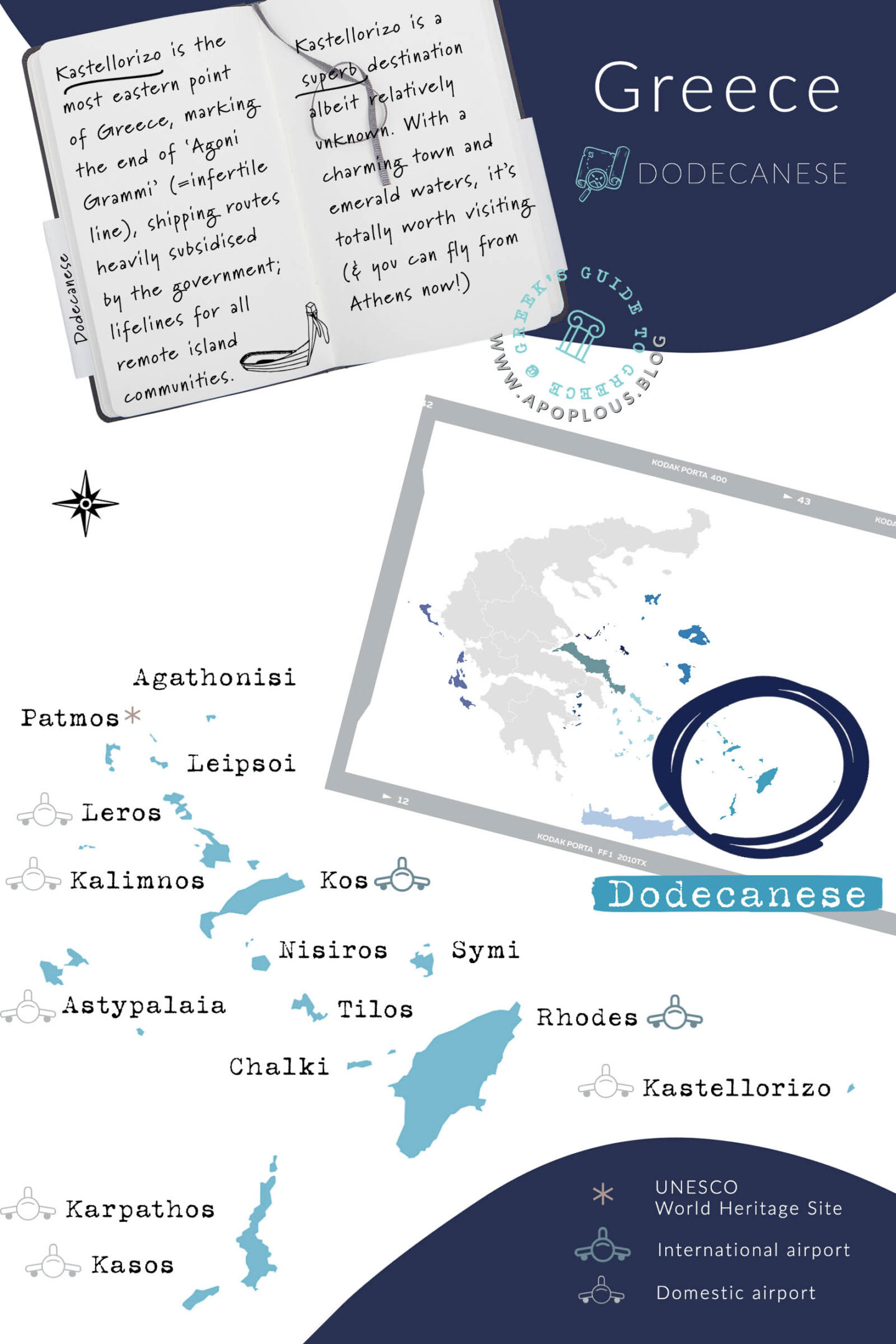
How to get to Greek islands (Cyclades & Dodecanese) without international airports:
Reaching islands that do not have an international airport involves using Greek airlines and / or Greek ferry companies. In a nutshell, airlines connect the bigger / most populous islands to the mainland. Ferry lines operate routes typically within the aforementioned island groups connecting the islands to each other and, in most cases, Athens.
There are 3No options for reaching islands that do not have an international airport:
- For islands with small airports hosting domestic flights: International flight + Domestic flight
- All islands: International flight + Boat
- For special circumstances: International flight + Domestic flight + Boat
No matter which option, you may be unable to perfectly coordinate your departure times from one place to the next. An overnight stay may be required. This is not necessarily a bad thing! You can change an awkward overnight stay into a two-day city break. Or you can explore one more island. Flying into a well-known island, staying for a couple of nights and then moving on to a smaller island means your trip will have both cosmopolitan and laid-back vibes.
1. Best way to get to Greek islands with small domestic airports: International flight + Domestic flight
Fly to Athens or Thessaloniki from Europe / USA (Athens only) / Singapore (Athens only) / Turkey / Middle East. From there, fly to an island with a small airport operating domestic flights.
The following islands have small airports connecting them with the mainland via 40-50min seasonal flights, 3-4 times a week (in the summer):
Cyclades (all airports): Mykonos | Santorini | Milos | Paros | Naxos | Syros
Dodecanese (all airports): Rhodes | Kos | Astypalaia | Leros | Karpathos | Kasos | Kalymnos | Kastellorizo
All islands with an airport are connected to Athens. Some are also connected to Thessaloniki, Greece’s co-capital in the north. Connections from Thessaloniki change quite a bit each year. However, the general trend is that every year more and more islands get air routes to / from my beautiful hometown! If it suits your destination and depending on your point of origin, it may be better to choose Thessaloniki over Athens as flights can be slightly cheaper.
It is worth noting that the vast majority of island airports are tiny. It is, therefore, likely that you will travel on a small plane, possibly a propeller powered. I find this to be quite exciting but, if you are a bit of a nervous flyer, just sit back and gaze at the beautiful geography sprawling below you. No matter where you are going, you will be there in maximum 50mins! Once you arrive at your destination, prepare to bear witness to the logistics of small island airports; there are none!
Last thing to clarify. Islands are not typically connected to each other via air. If you do find yourself in one of the international airports in Mykonos, Santorini, Kos or Rhodes you will have to switch to a boat to get to a smaller island. Having said that, let’s get to option 2.
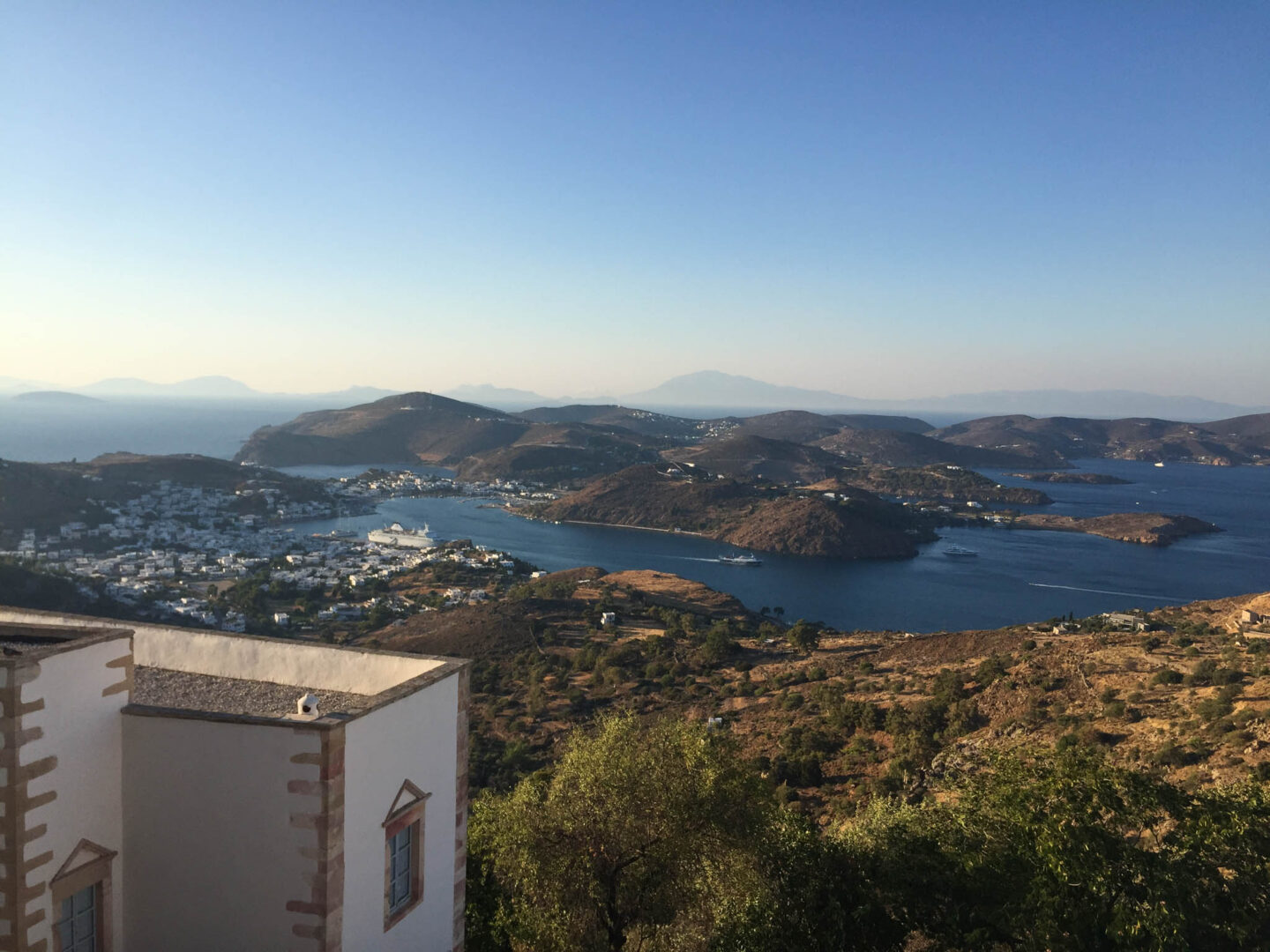
2. Getting to any island in the Cyclades & Dodecanese (the easy way): International flight + Boat
Fly to one of the international airports in Athens, Mykonos, Santorini, Rhodes or Kos. Then take the boat to an island nearby.
Greek ferry companies have routes to all islands starting from either Athens or one of the bigger islands which serve as hubs. As I mentioned previously, the islands naturally form clusters (what I have been referring to as island groups), hence shipping routes are mostly based on geographical proximity.
GETTING TO ONE OF THE ISLANDS CLOSE TO ATHENS
Take the boat from Athens if you are traveling to one of islands close to the capital: Kea, Kithnos, Sifnos, Serifos, Syros, Andros, Tinos, Paros, Naxos. From Athens, you can also get to Mykonos by boat fairly quickly, in case you can’t (or don’t want to) reach the island by plane.
For the islands further away, starting from Athens will mean many hours on the boat. In this case, check if you can find an overnight route and book yourself a cabin. Not keen on that? Keep reading.
GETTING TO ONE OF THE ISLANDS FURTHEST FROM THE MAINLAND
For all other islands in the Cyclades and Dodecanese groups, I would advise against starting your boat journey from Athens. It will be more time efficient to bypass some of that boat journey by flying straight to a destination in the middle. Why? Well, they are quite far from Athens and ferries tend to do one huge circle, making many stops along the way. While this is great when you are island hopping, it will be tiresome if you are only trying to reach the last port of call.
For the southern islands of the Cyclades ie Milos, Folegandros, Anafi, Amorgos, it will be more time efficient to fly to Santorini and then catch the boat from there. The rest of the Cyclades can be easily accessed through Mykonos international airport. Nevertheless, some of the islands in the central Cyclades ie Paros, Naxos, Sifnos, Serifos can be accessed either from Athens or Mykonos as they stand roughly between the two.
With regards to the Dodecanese, the best way to visit the smaller islands is to fly to Rhodes or Kos and then catch a boat from there. The routes connecting them to Athens and the Cyclades will most likely entail a very long boat journey.
Remember, the difference in flight time between flying to Athens or to Mykonos, Santorini, Rhodes and Kos from abroad will be tiny. It certainly does not compare to covering the distance from Athens to these islands by boat.
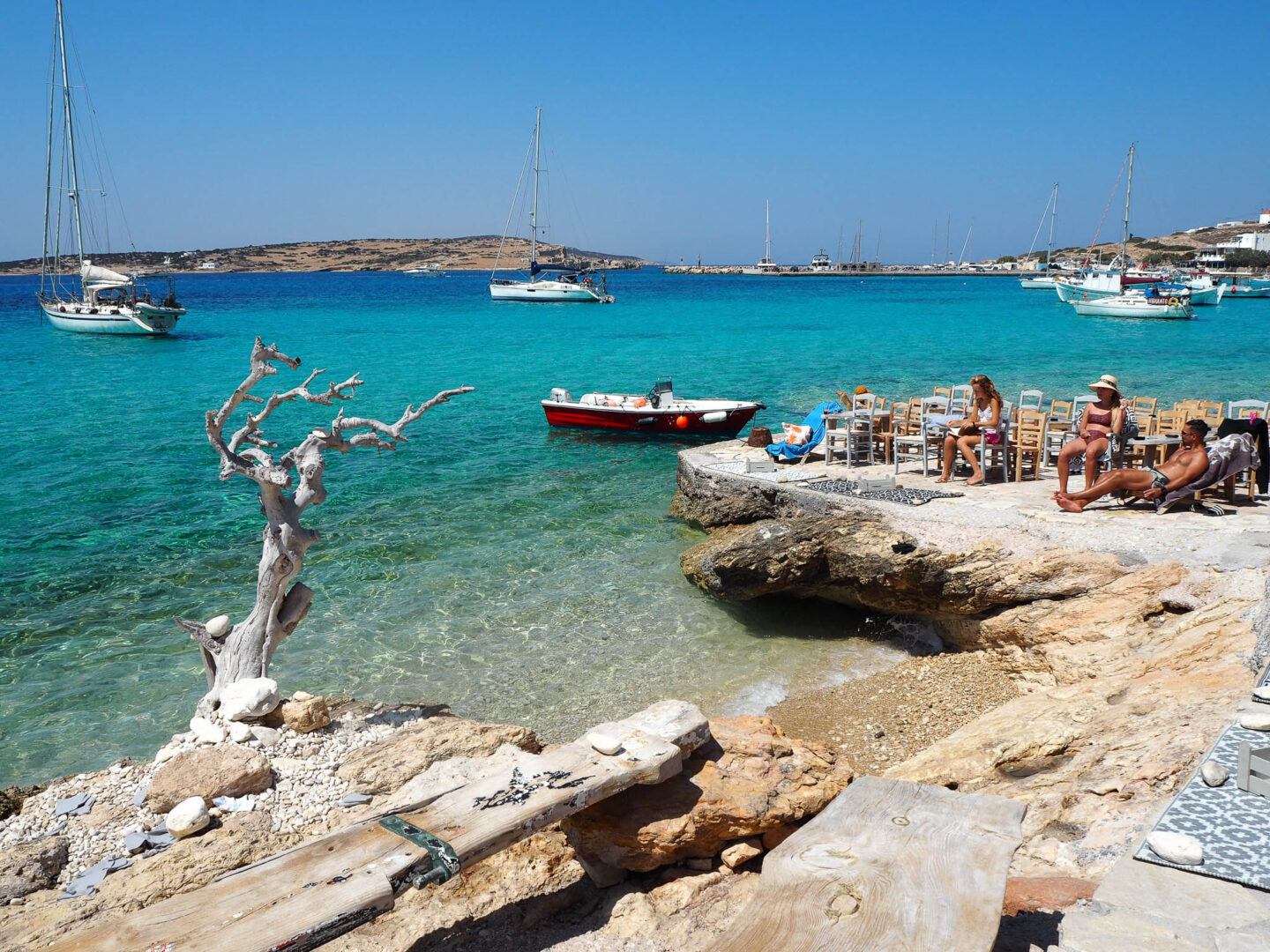
3. Getting to any island in the Cyclades & Dodecanese (the hard way): International flight + Domestic flight + Boat
Lastly, if you are struggling to get a flight to Mykonos, Santorini, Rhodes or Kos there is always another option. Fly to Athens or Thessaloniki, then fly to one of the islands with domestic airports and then take a boat to the islands with no airport. I have done it once all in one go from the UK. I have also done it a few times with a few days stay in Athens or Thessaloniki.
Talking from experience, this transportation merry-go-round make sense if you are starting or ending your trip with a city break. Combining an island holiday with a visit to historic Athens or hippy Thessaloniki is always a good idea.
However, if your plan is based on doing two flights and one boat journey all in one go, double check there is no alternative. Think about those carbon emissions that could have been prevented! Despite that, as I previously said, I have done it (as I had no other choice at the time!). It is a bit tiring but it is all right for a longer holiday. After all, depending on your point of origin this may be your only option.
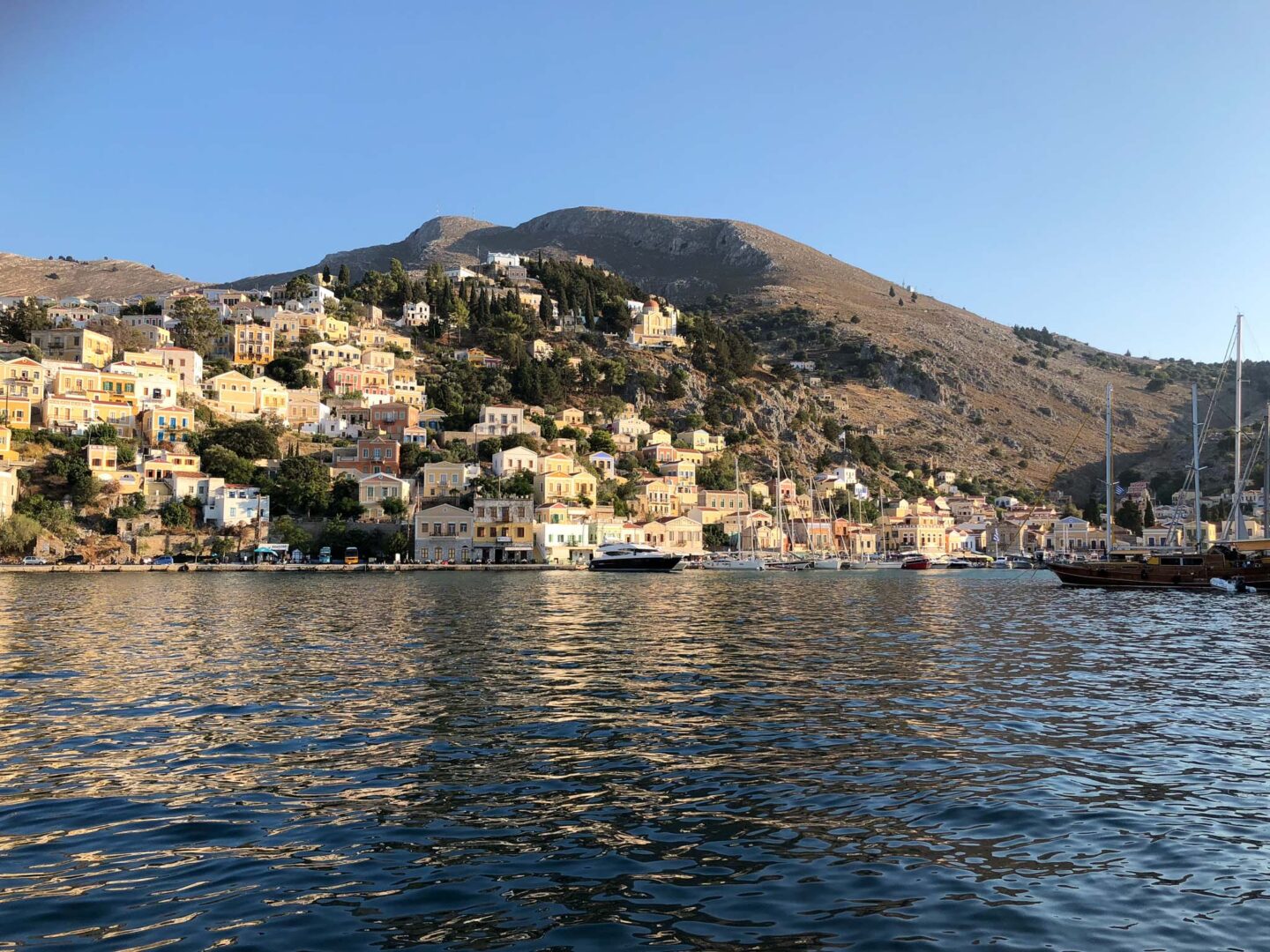
FINAL THOUGHTS
I have been traveling to the Greek islands every summer for the past 15 years, sometimes starting from mainland Greece but, mostly from abroad. I hope that I was able to convey some of that wealth of experience! Please do leave your questions and comments down below. I will be happy to provide you with tips for your particular destination.
In case you are wondering what the best way is to find specific flight and boat schedules and book your tickets, continue your trip planning with:
A Greek’s Guide to… Travelling to the Greek islands -How to book ferries & flights
This is not a sponsored post & I am not affiliated with any of the hotels, restaurants or organisations mentioned.
A DEEP DIVE INTO GREECE
Looking for more travel guides for Greece? Or maybe just tips, inspiration and practical advice for effortless travel and authentic experiences? Hit the buttons below!
___
